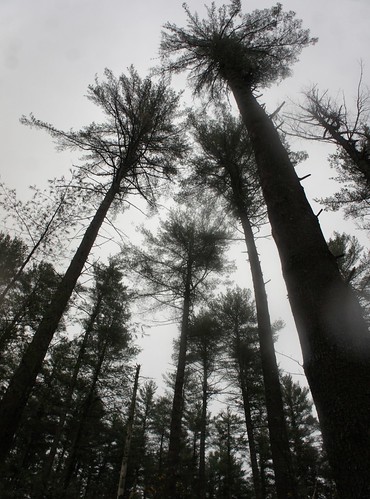
Large white pines are retained in a 110 year-old plantation, while canopy gaps were created to initiate regeneration of hardwood species at Marsh-Billings-Rockefeller National Historic Park. Photo by Kyle Jones, National Park Service
All this month we will be taking a look at what a changing climate means to Agriculture. The ten regional USDA Climate Hubs were established to synthesize and translate climate science and research into easily understood products and tools that land managers can use to make climate-informed decisions. The Hubs work at the regional level with an extensive network of trusted USDA agency partners, technical service providers, University collaborators, and private sector advisers to ensure they have the information they need to respond to producers that are dealing with the effects of a variable climate. USDA’s Climate Hubs are part of our broad commitment to developing the next generation of climate solutions, so that our agricultural leaders have the modern technologies and tools they need to adapt and succeed in the face of a changing climate.”
It can be a daunting task to try to plan for something as big and complex as climate change. Uncertainty, whether we will be facing drought, extreme storms—or both—from one year to the next, may make planning for healthy and productive forests seem impossible for managers and landowners.
Just like no two forests are alike, neither are the people who own or manage them. The different values and goals are reflected in the variety of decisions people make when responding to risks or incentives. The USDA Northern Forests Climate Hub and the Northern Institute of Applied Climate Science (NIACS) are focused on helping people think about climate change in a way that’s practical and relevant to their particular goals. We use the Adaptation Workbook to help all kinds of organizations and people consider climate adaptation while meeting their land stewardship goals.
An example is the Marsh-Billings-Rockefeller National Historic Park in central Vermont, which holds a special place in the history of forestry, encompassing the longest continuously managed forest in North America. The forest adaptation project at Marsh-Billings-Rockefeller National Historic Park is one of many forest adaptation demonstration projects developed through the Climate Change Response Framework that highlight the diverse approaches forest landowners and managers are taking to better prepare forests for a changing climate.
Preserving this history is important at this National Park, even when considering climate change. The park contains many scenic vistas along historic carriage roads, several of them lined by tree plantations that date back to the 1880s. Unfortunately, the oldest plantations are showing signs of decline. Park staff are concerned that declining health of Norway spruce plantations, which are vulnerable to increased temperatures, may be a result of a warming climate. Additionally, some trees in the 110-year-old white pine plantations are succumbing to disease. Maintaining these historic plantations and their iconic large trees is a priority, but the long-term goal is to transition many of these plantations to natural forests that will be better suited to a future climate.
Staff from the USDA Northern Forests Climate Hub and NIACS worked in partnership with National Park Service staff to identify approaches that incorporate climate change considerations to help meet the park’s goals of maintaining the historic plantations while working towards a long-term transition to natural forests. Recently, staff at the park began work in these plantations, harvesting diseased trees to open up large gaps in the canopy in order to initiate regeneration of young trees including native hardwood species. Many of the large trees were retained to preserve the historic and scenic value of the plantations.
No comments:
Post a Comment
Note: Only a member of this blog may post a comment.